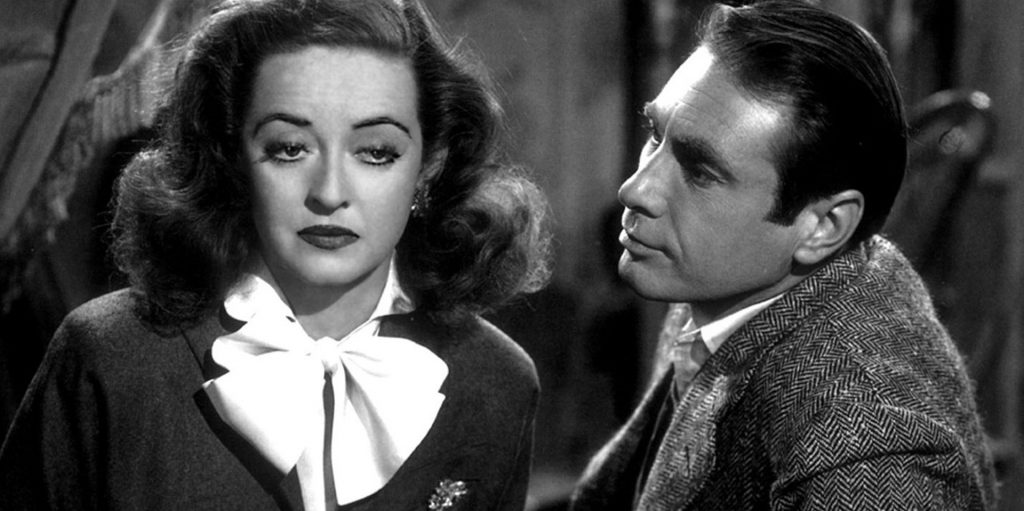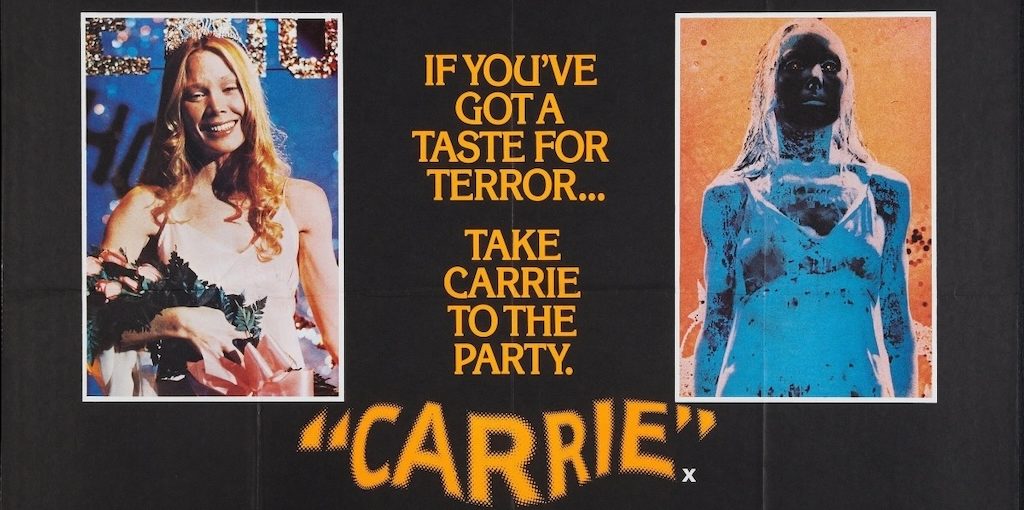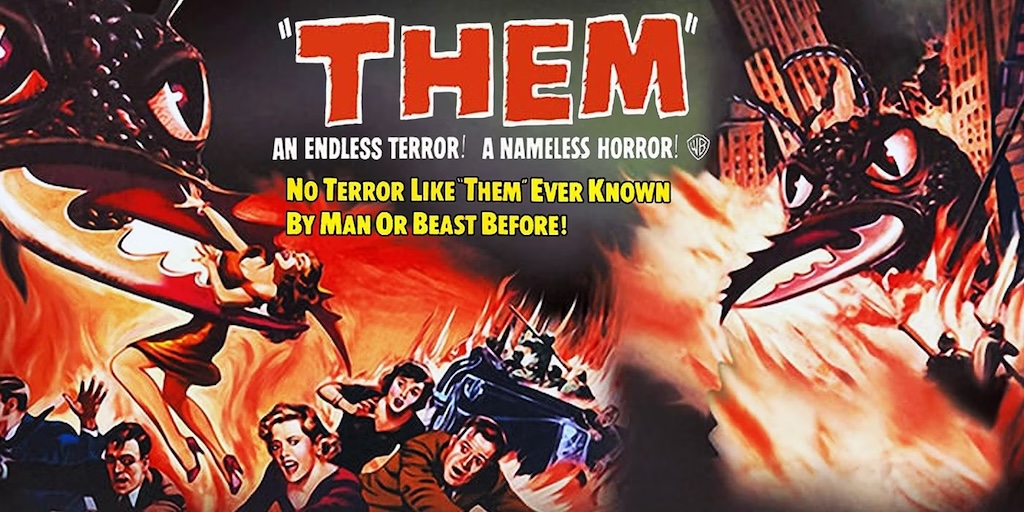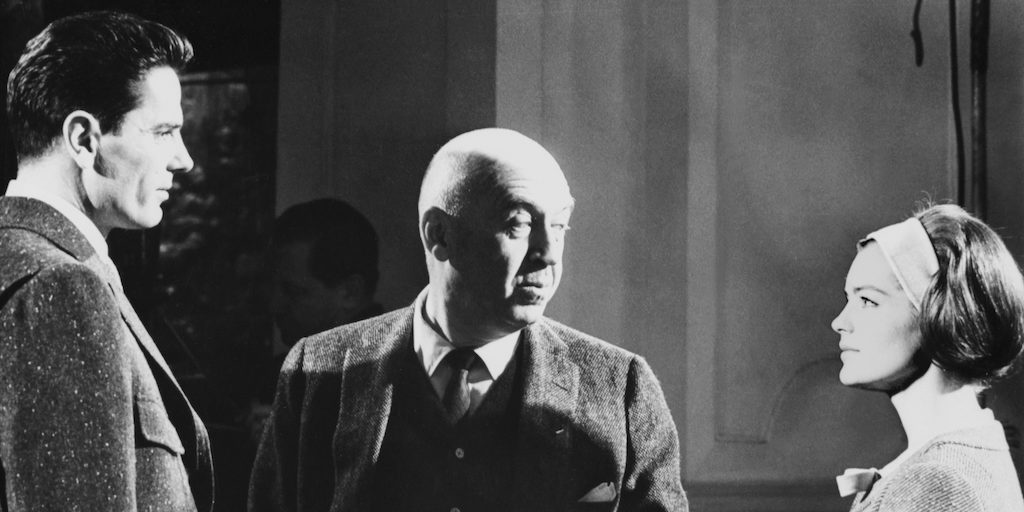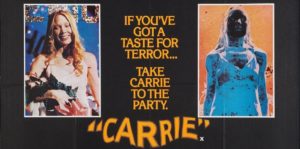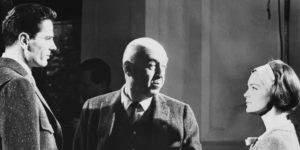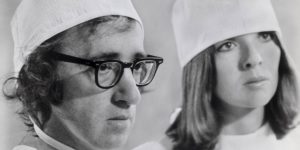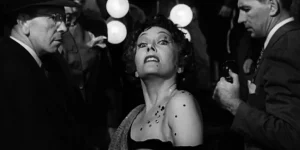The concept of cinema employs in its procedure a lot of same “operative transformations” ––as we have denominated it–– of that which has been called ––keeping the poetics present–– metamorphic tradition. Its design is simple yet eminent. To reconfigure mythic-symbolic information by themes, motifs, people and places, even determined “genres”. It is also known as hermetic or symbolist tradition, and it must not be confused with domestic rituals, or ivory towers on a particular lease. Cinema is the most palpable and eminent demonstration of these transformations.
It is not about mere quotes, fit only to low-flight exhibitionism and always submerged in the speculative plane. It is the information ––not the quote–– that is operatively transformed into something that works into the body, plot or system in which it has been inoculated. Because of that, Cinema by putting-on-the-scene runs ––or used to run–– with that advantage. It can incorporate the information within a determined diegetic frame whose material and emotional surroundings ––the latter as an extension of the former–– can be organized modo sui.
Another difference, and the most productive at that, of filmmaking is its capacity of assimilating the allusion to a historic cotidie. While the poet, the narrator, until recently the playwright, and the scenic musician had to, almost inexorably, raise the tone, hit the flat, and even fall in the stylistic nota bene, cinema can operate on this information, starting from the supposed diegetic that it is about something objectively given, and whose intention ––as in all phenomenology–– is an intellective choice by a singular viewer.
For this one can take as an information-base the colors, the shapes, the numbers and the horizontal-vertical relationship of the narration; but also can produce these operative transformations by nominative allusions to which is assimilated a ricorsi in the viquian sense.
An example from an exceptional film, already a classic. William Friedkin’s The Exorcist. Here we have some of this operative transformations based on similes and repetitions turned into resources. They come both from the physical similitudes, the double names and the names “outside of the frame”.
Let’s see one of them. Father Karras has Damien for a first name; and here it can be seen how what could have stayed as a quote, transforms into information, and this into an operative. Father Damien was a Belgian priest (1840-1889), today a patron saint of those ailing with AIDS, who led a leper colony in an island in Hawaii, which will be visited by Robert Louis Stevenson, an admirer of his work. Already settled in Samoa and after the priest’s death on account of the contracted leprosy, Stevenson finds out that a figure of Father Damien has been attacked by a protestant pastor accusing him of having been a drunk, a womanizer, and everything imaginable.
Stevenson, already sick with tuberculosis, comes out in defense of his friend. He tells his family that the consequences product of such defense might accelerate the inevitable. The family gives their unanimous support and he writes the letter.
I leave ––classically–– for the end of this story, the unexpected detail that completes the operative transformation. The addressee of the letter defending Father Damien was named Hyde. Even more, Dr. Hyde. Like in a mirror.
In cinema the use of real names, of historical characters, acts as a sign to indicate “that” which is desired to allude making it a part of the fictitious character. As we have seen, such is the name Damien for one of the priests in The Exorcist.
Of course, the quote can be employed not only as a biased mention of a historical character, but as the model of a determined character in the plot. In such a way, you take some of his habits, tics, ways of dressing or expressing themselves, and there you have the fictional derivation of a character existing in reality. Also here the allusion can take a bragging or controversial tone, even an ambiguous mix of both senses.
Aside from being one of the greatest films in history, subject of every kind of cult and quarry of quotes that go from the most demanding camp to the highest cultural gesture, All About Eve (1950) by Joseph L. Mankiewicz is a film a clef as for some of its fictional characters. Without a doubt the quote that takes the cake is for the character of Addison DeWitt, portrayed by George Sanders.
Here we can find a beam of allusions, given that not just his first and last names are employed for his fictional coining, but some elements of his costume, opinions and other matters are employed as well.
The name Addison alludes to Joseph Addison, an 18th Century English writer praised for his fine prose, irony and also ––fundamental for the film–– for being one of the creators of modern journalism. “Wit” is a term employed to express inventiveness, epigrammatic irony and also is the skill to “catch on the fly” any kind of implicit commentary. James Cameron employs a similar procedure for the last name of Rose, his leading lady in Titanic. Wit is what the German romantics called “Witz”, a feeling and skill of intertwining, for example, two things, themes, signs that are very different from each other. It is also about an ironic intuition or, for authors such as the Schlegel brothers ––who took this concept to its philosophical peak––, the gesture of romantic aesthetic par excellence.
John Addison could be remembered also for his social attitude; a curious form of pedagogy consisting in that when he knew someone to make a mistake, a very notorious mistake, he tried his best to sink that someone deeper into that mistake.
Given his costume ––overcoats with astrakhan necks, cigarette holders, cane––, Addison De Witt is a displaced double for George Jean Nathan, a feared theatre critic that ruled a sizable portion of the Broadway journalistic scene and is one of the founders, along with the stentorian H.L. Mencken, of The Smart Set magazine; which is now more remembered ––if it still is––, for giving a place, adopting and directly launching the creation of that sub-type of thriller later known as hard boiled and frenchified as “noir”. The early sights of such narrative tendency were the first stories by Dashiell Hammett. Today, many of them, if not all, seem mechanical forms of storytelling and, rather than sparing or stoic, are coldly pragmatic narrations.
Among Nathan’s obsessions were the hatred of everything referred to cinema and Hollywood. He wasn’t the only of his kind.
The strategy of making present this kind of allusion in the plot, but in a biased manner, to avoid legal nuisances and, especially, to make richer and stranger the dramatic content of the story, consists of mentioning both characters in the dialogue, the fictional and the real one. This way when Eve (Anne Baxter) tells stage director Bill Sampson (Gary Merrill) a disdainful tirade against Hollywood, he answers “You sure read George Jean Nathan”. She answers “Every week”. Then the director adds “and Addison DeWitt”, to which Eve answers “Every day”.
Since the motto in Mankiewicz’s film is simulation, the fictional nature every person assumes and imitates from another, so on and so forth, is why this film concludes with that triple mirror in the finale. When we see that a new copy, this time of Eve’s, and assumed by newcomer Phoebe, is multiplied to infinity in that interior cold sea. With this, the dramatic content and its objective connection are reflected spectacularly in the film’s diegesis.
It is evident that Hollywood cinema has arrived by then to such a degree of eminent domain, that the controversial settling of the score with theatre in general, and with Broadway in particular, it is displayed here without any restrictions. Not only the critic, the playwright, the actresses, the director and the producer, but all the troupe that accompanies the theatre world (which some reduce into a “little world”) are mercilessly judged in this film… In all rigor, very fairly.
Since art and life are intermingled, as we all know, and this has been a key motive of Mankiewicz films, who has claimed and sustained that “life always ruins the script”, the ironic climax of this game of mirrors is the following. Nathan’s great love and passion was Lillian Gish. With whom he had an oscillating relationship for over a decade, until she broke it off on account of Nathan’s insistence in “formalizing”.
Knowing what Lillian Gish means for the birth of Cinema, one wonders if there was a time, in lost recesses, where she would talk him about “Mr. Griffith”, as she always called him over his centenarian life. As well as choosing him as a title for her memoirs, Mr. Griffith, the Pictures and Me.
Now that we are in the mythopoetic domain, as well as the domain of the allusions in All About Eve, some readers of this column might have wondered the why of its chosen title…
I have seen All About Eve in all the possible times, ways and formats. In 35mm and 16mm copies. In television, with subtitles, dubbed in Spanish and sometimes with no subtitles at all. Then on VHS, later on DVD, and now in Blu-Ray. At some time, I was close to buy a copy in 16mm.
I have even dreamed about it. I present one of those dreams as an example. I was in their group, all brought together by oneiric friendship, and went to the Venice Film Festival to present… I imagine All About Eve itself; given that all dreams have something of a play or a footnote to the work and situations of Luigi Pirandello. Another manipulator of mirrored relationships and agnostic postures regarding all knowledge.
I remember we reached the airport; not at all similar to the one in Venice which, to begin with, doesn’t have any, and you get there by train to later get into their intricate channels by gondola or in a vaporetto.
Not just that. The hall in this impossible airport with their glass partitions overseeing the runway, and where, of course, it rained, had something similar to the set at the beginning of Suspiria; but in a happier version rather than sordidly calculated.
I have not bought or cherished the copy I almost had in my hands that time; I am not a collector at all; and if I can be something similar to a bibliophile, for example, I have been always one by a transitional nature. Let’s see. I have bought and frequented as many old man bookstores all over my life and I have even found first or curious editions in the most unlikely of places: for example in a shack located in a gallery of the Mar del Plata Casino during a rainy day and where I found many treasures. Of these, I’ll give one… no, better still, two examples. The diary kept by a supporting actor, documenting the rehearsals of the now more or less celebrated Hamlet (1964) with Richard Burton, staged on Broadway by John Gielgud; and a single volume ––one out of two possibly in existence–– with librettos of Savoy operettas by Gilbert & Sullivan.
But I was never keen on collecting films, and now with this drop-down cybernetic aleph, even less.
I do have the book containing the original screenplay, as well as a long prologue-interview by and to Mankiewicz himself. Once I meticulously read the script, I see what was written there was shot almost in its entirety. With only one exception. When Karen Richards goes to the “21” club in Manhattan, where she has been called to have lunch with Margo, she enters (the entrance was shot in situ, its interior was not) and finds Addison with Eve. He comments her that given how Margo is, she’ll keep her waiting and she should read his daily column while she waits. He spreads the newspaper, very likely the New York Times; she gives it to Karen and then he leaves with Eve.
As you might remember, right there, in a medium shot, out of frame and because of Karen’s expression, we notice something bothers her. Shortly after we find out she was reacting to a venomous review written by Addison where he dismisses Margo in favor of his now protégée Eve.
Ok. In the original screenplay there is the detail of a close-up shot framing a newspaper page where you could classically see Addison’s photo and the title of his column “Things I promised not to say…”
Here we have another game of doubles and mirrors of which we have participated with voluntary and joyful frenzy. The script sometimes improves life; makes it so and despite all that is known and to be known, bigger than life.

